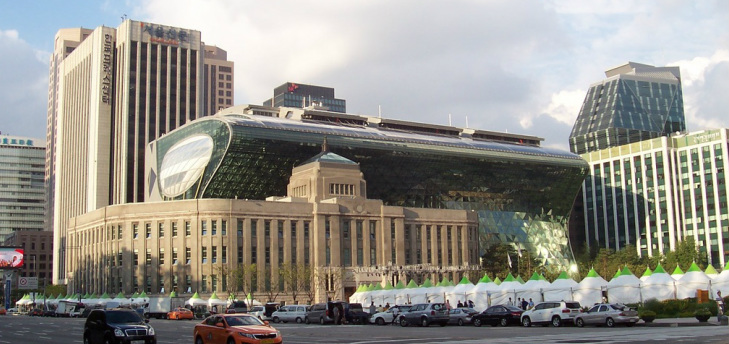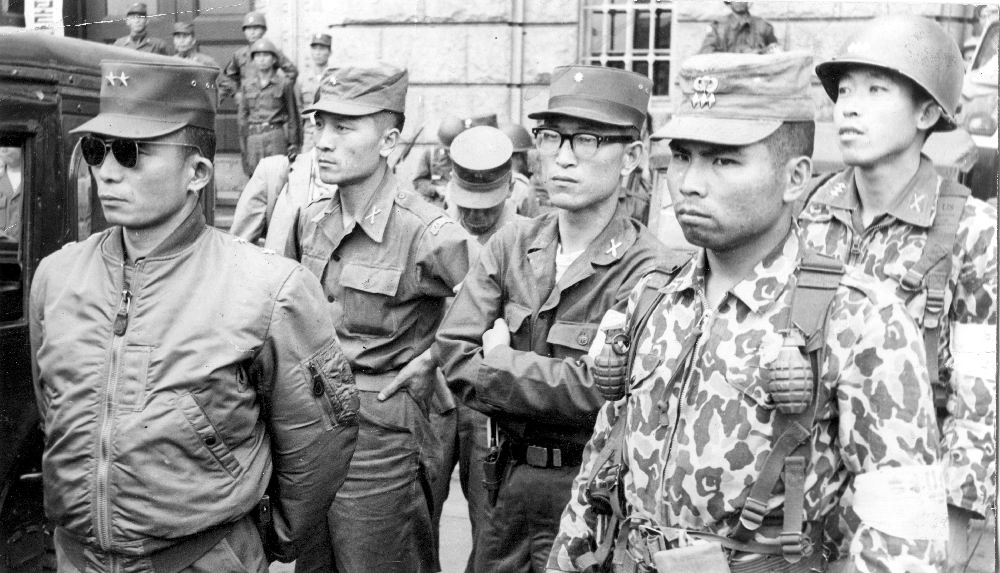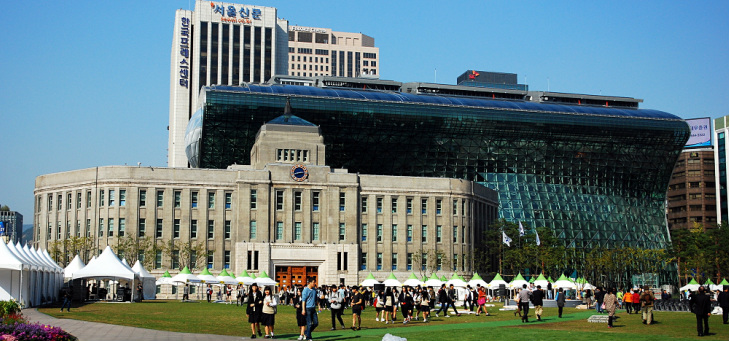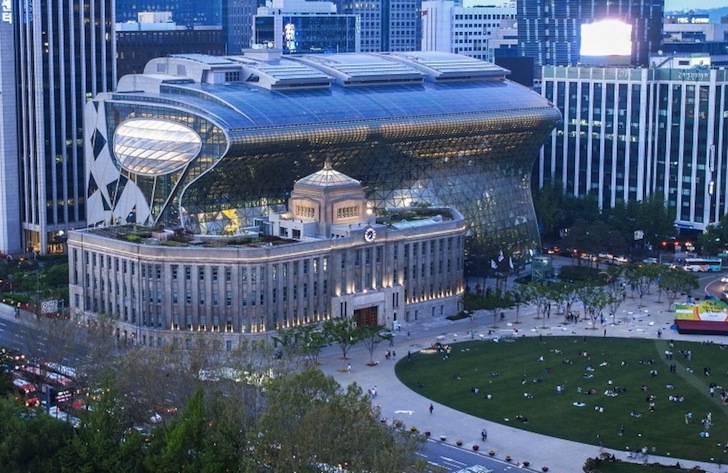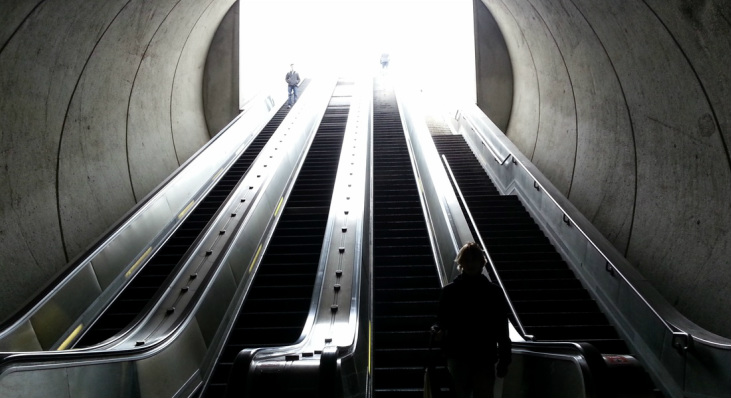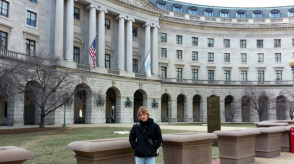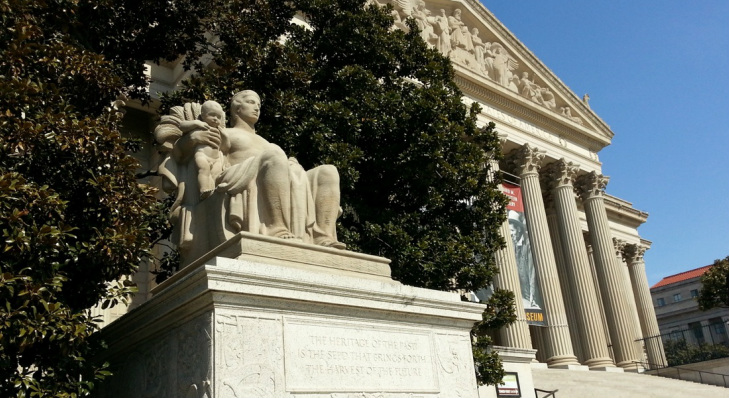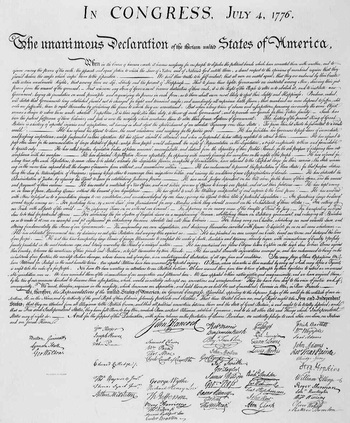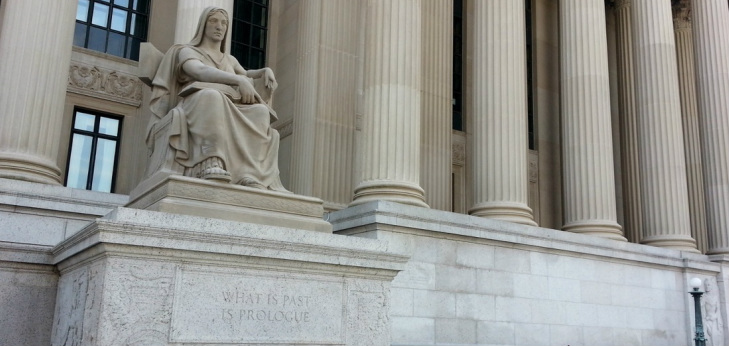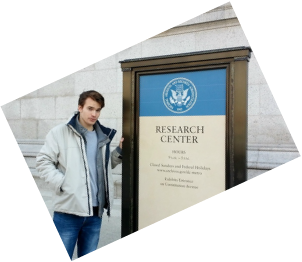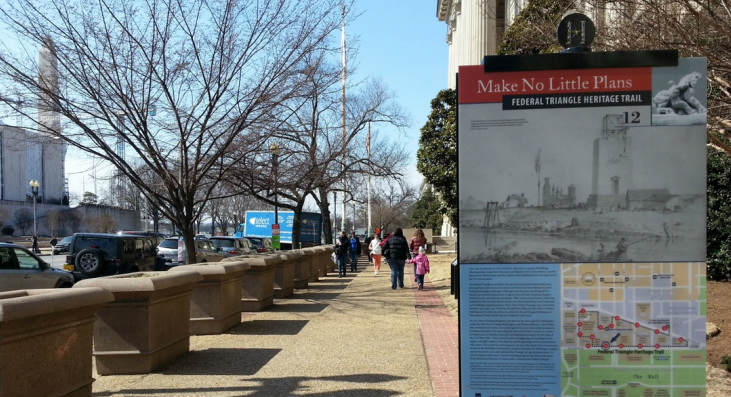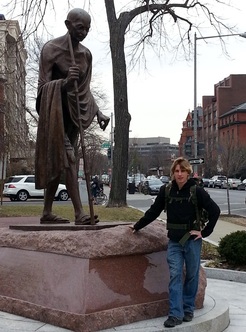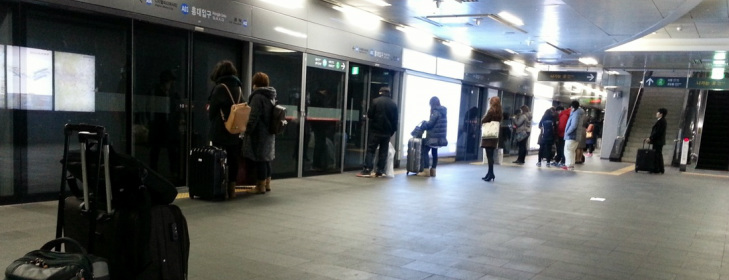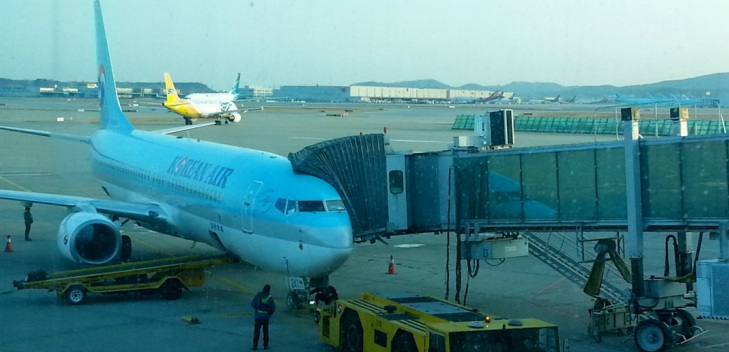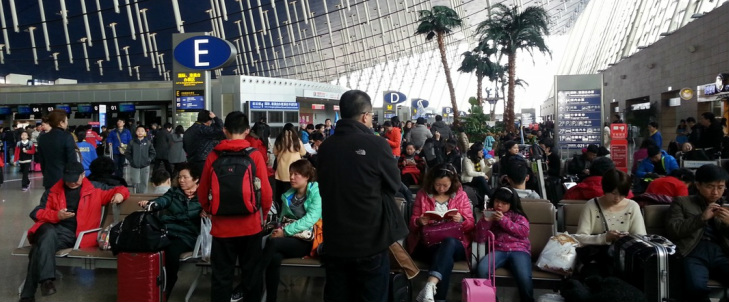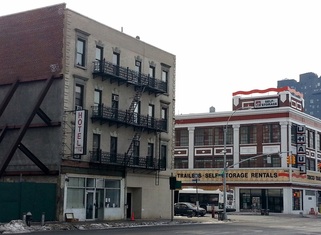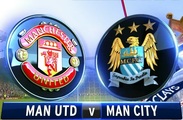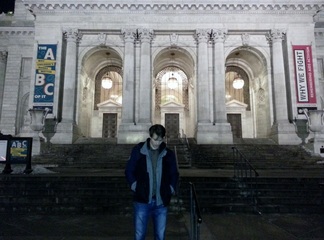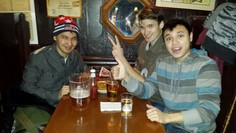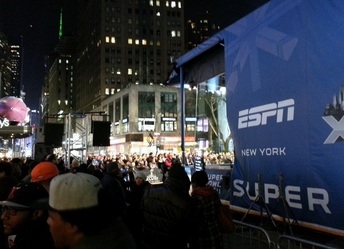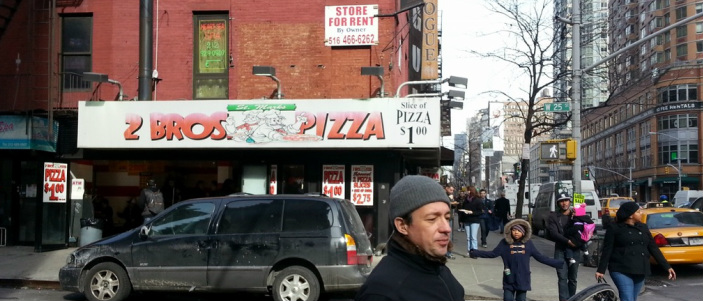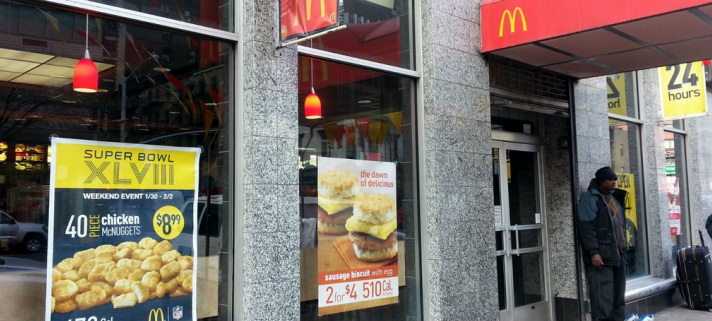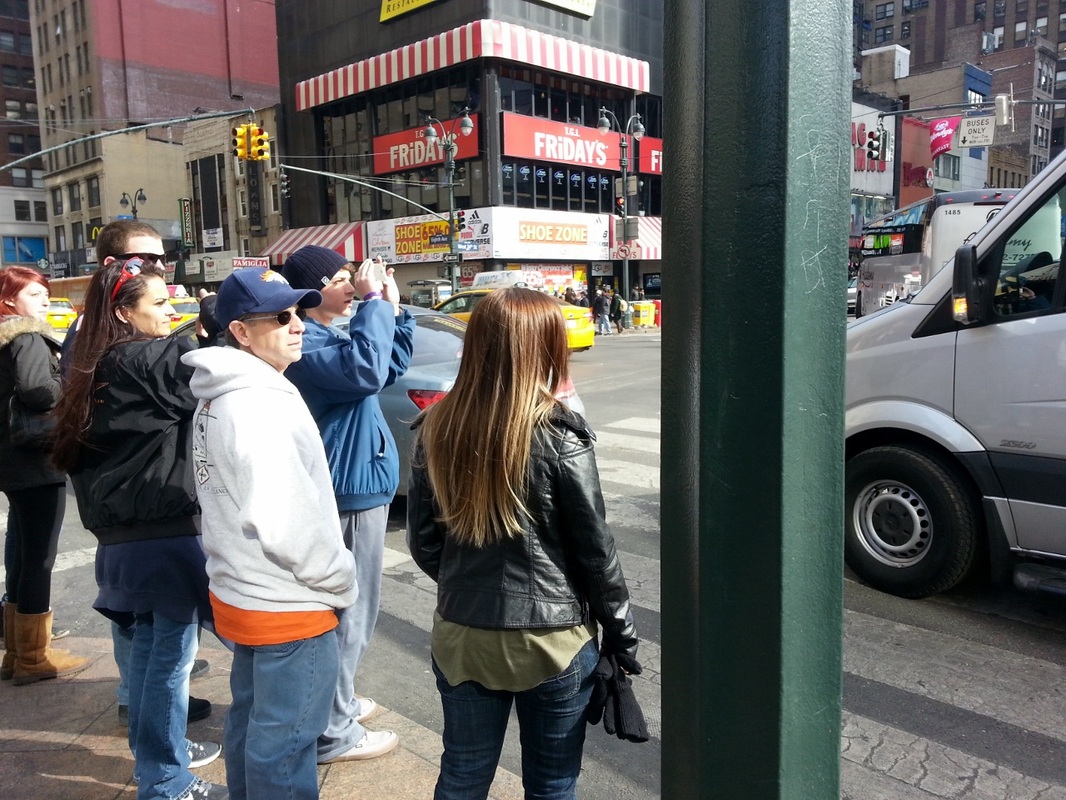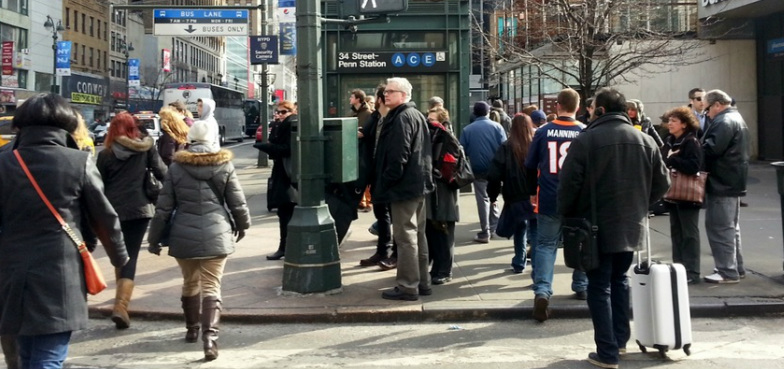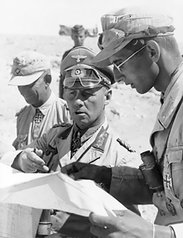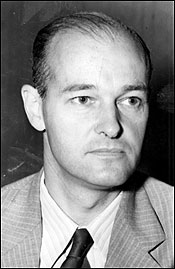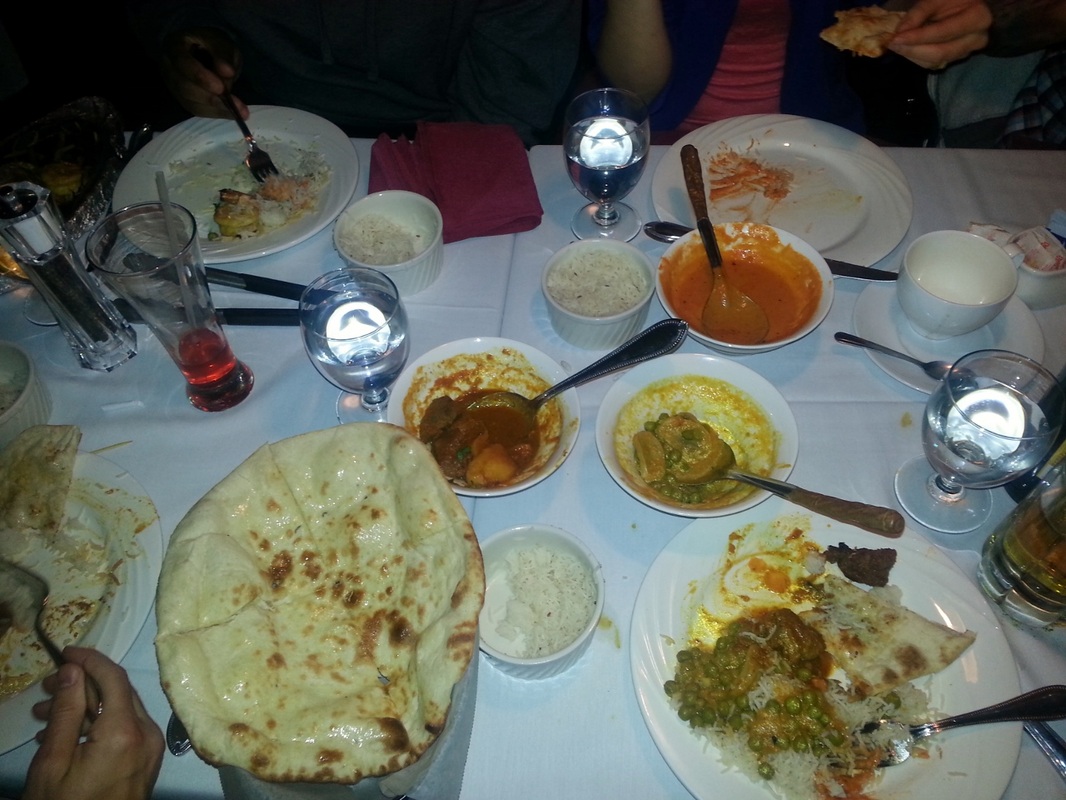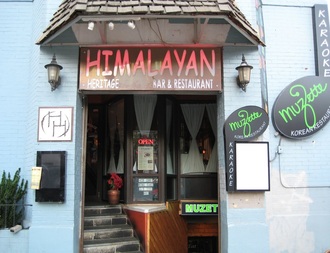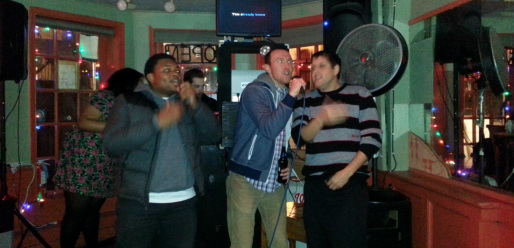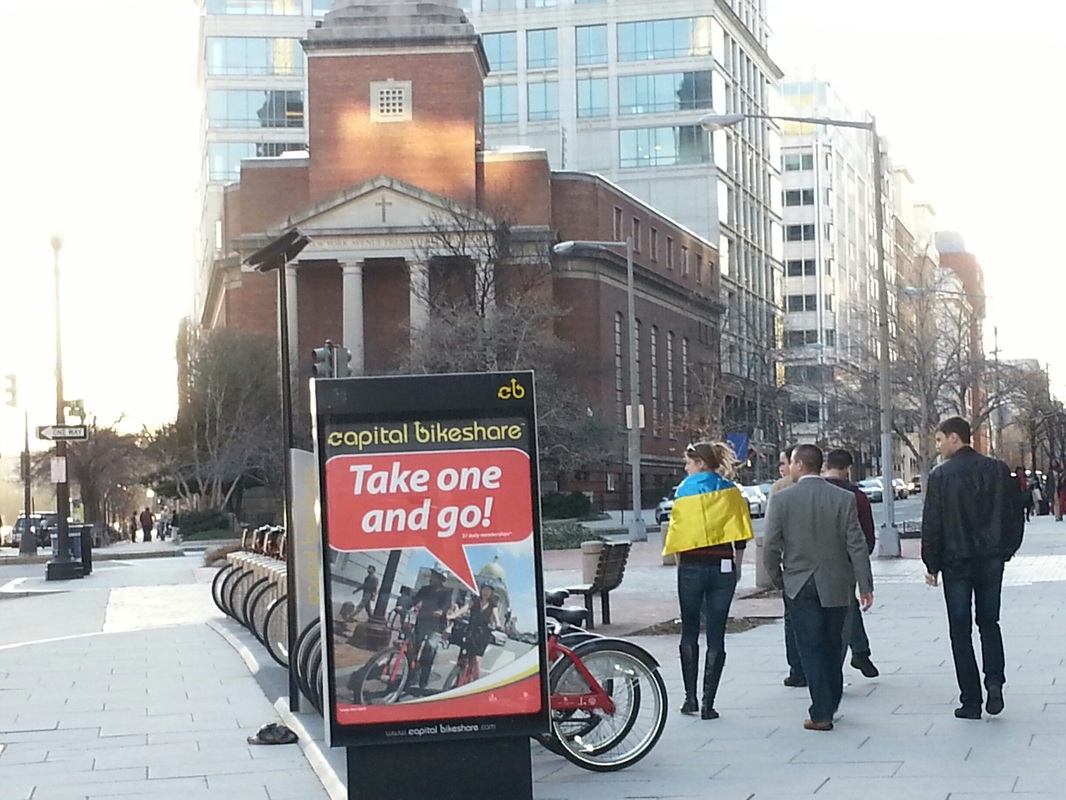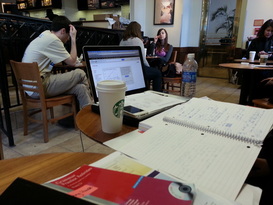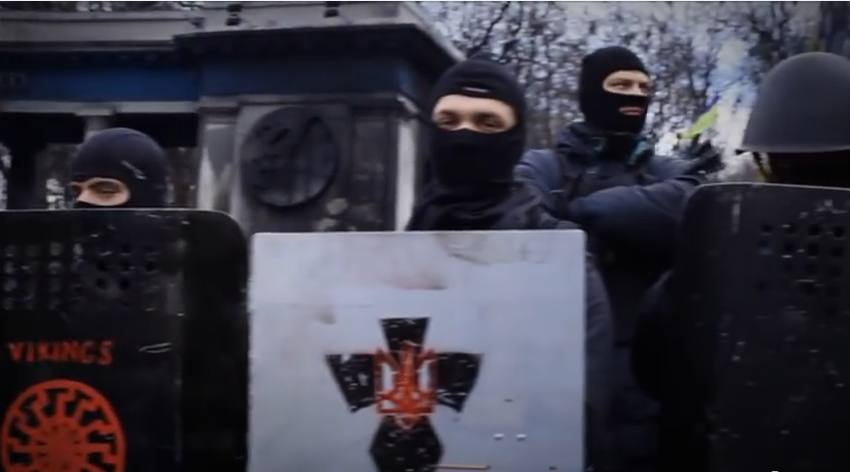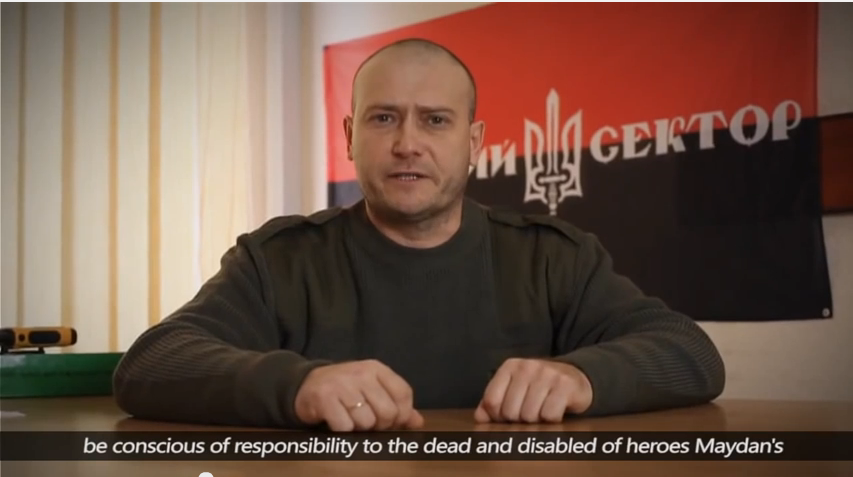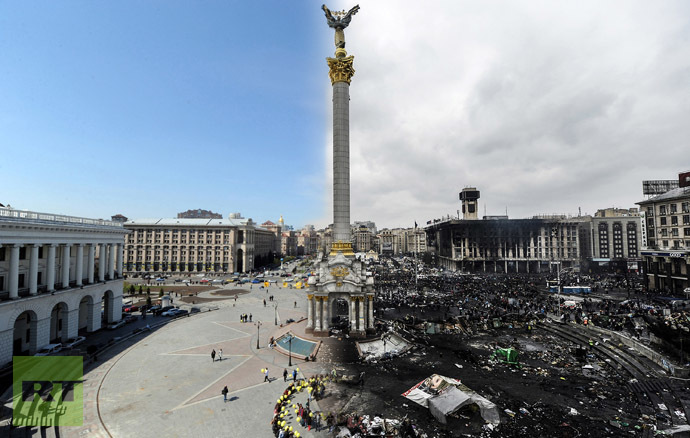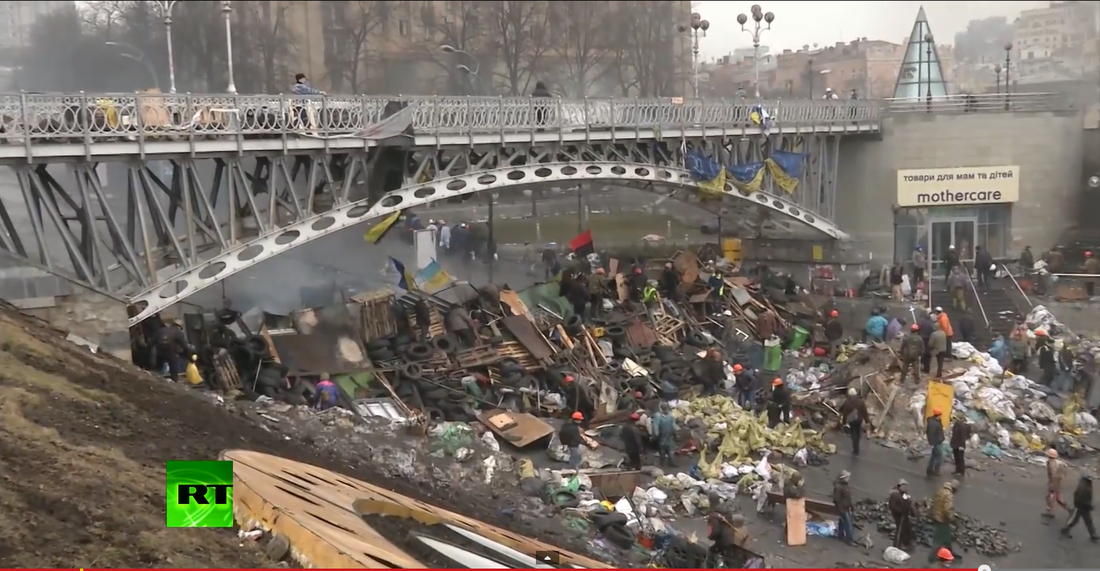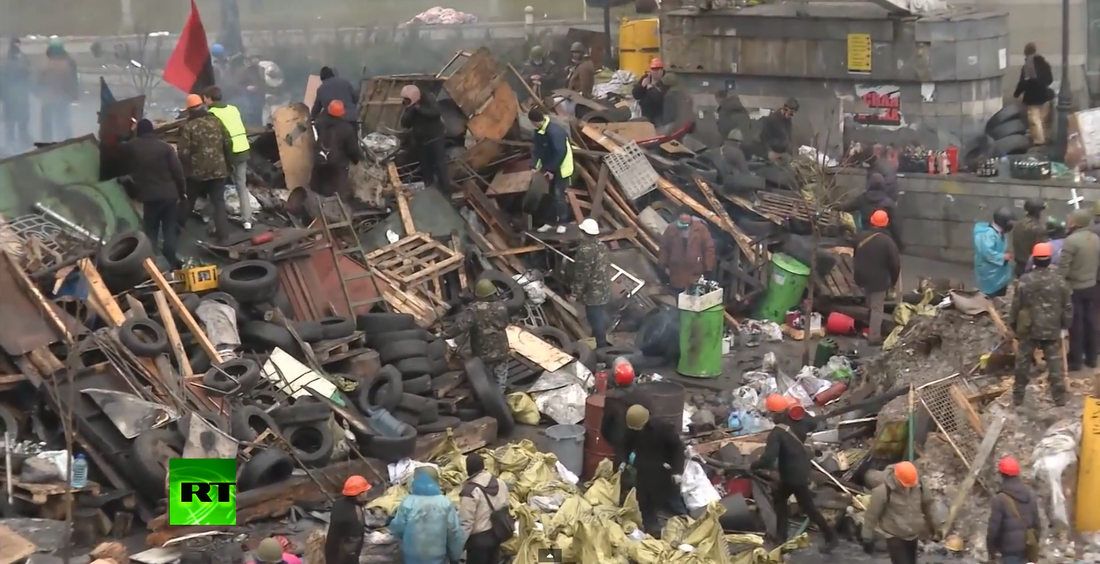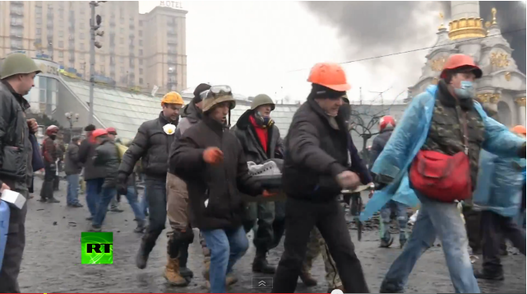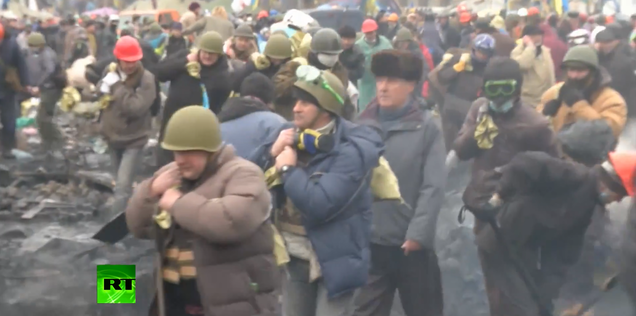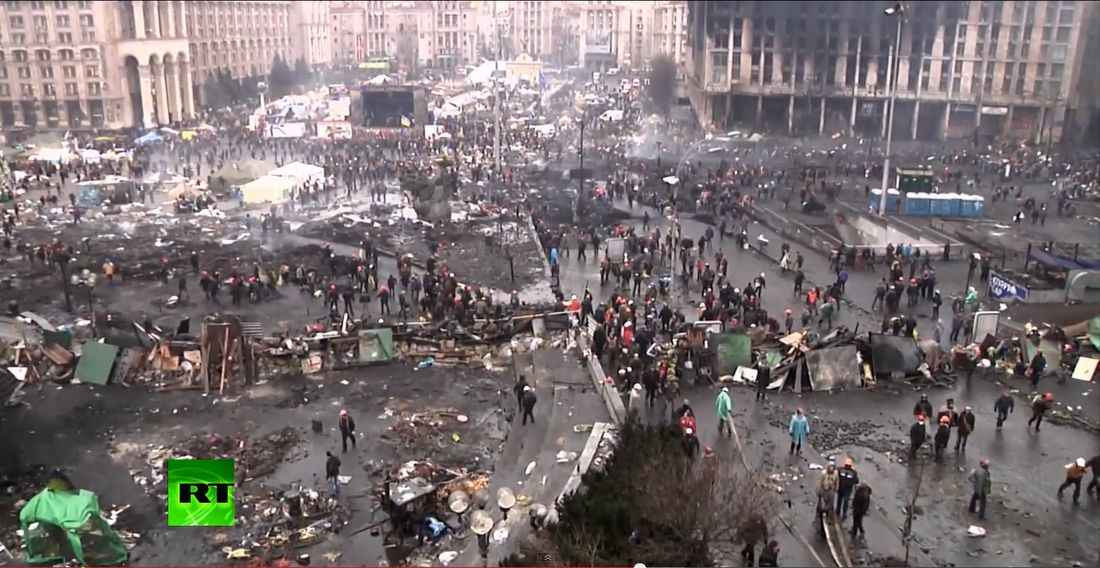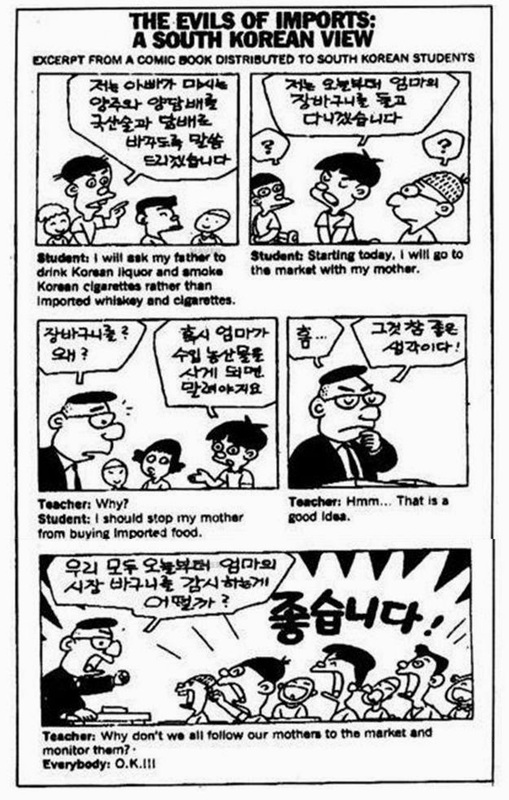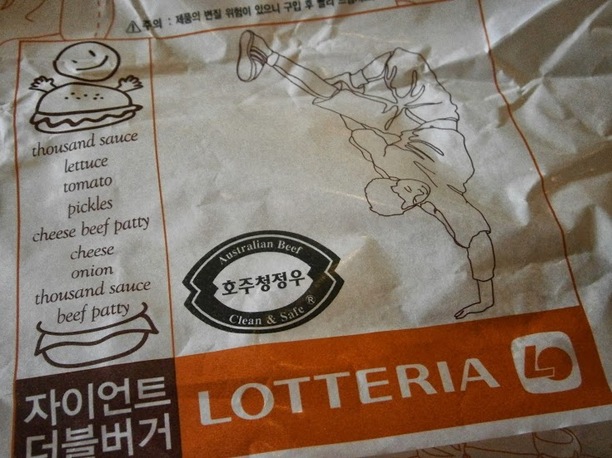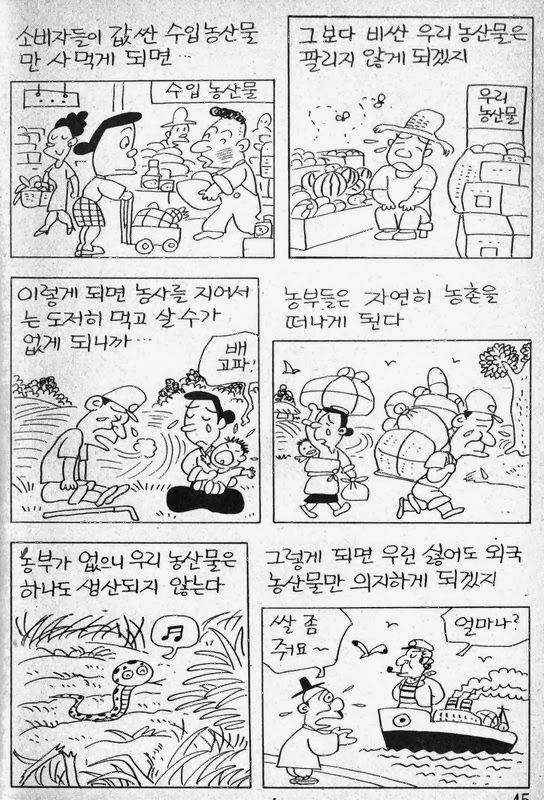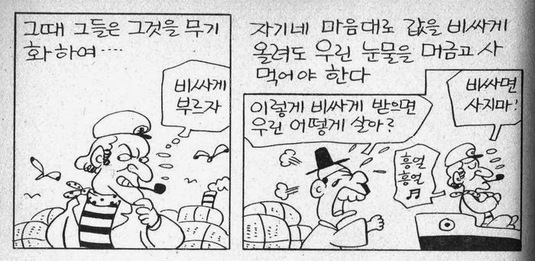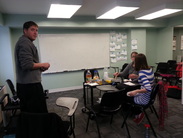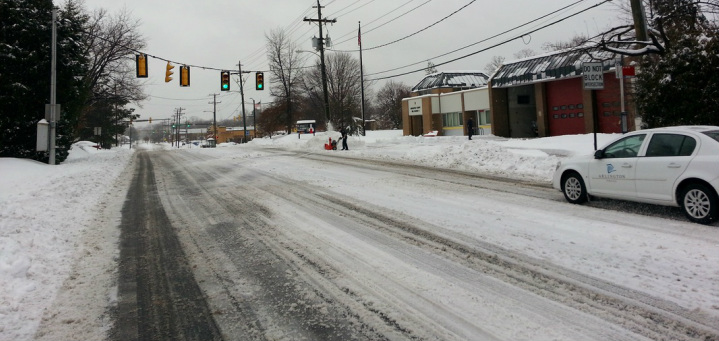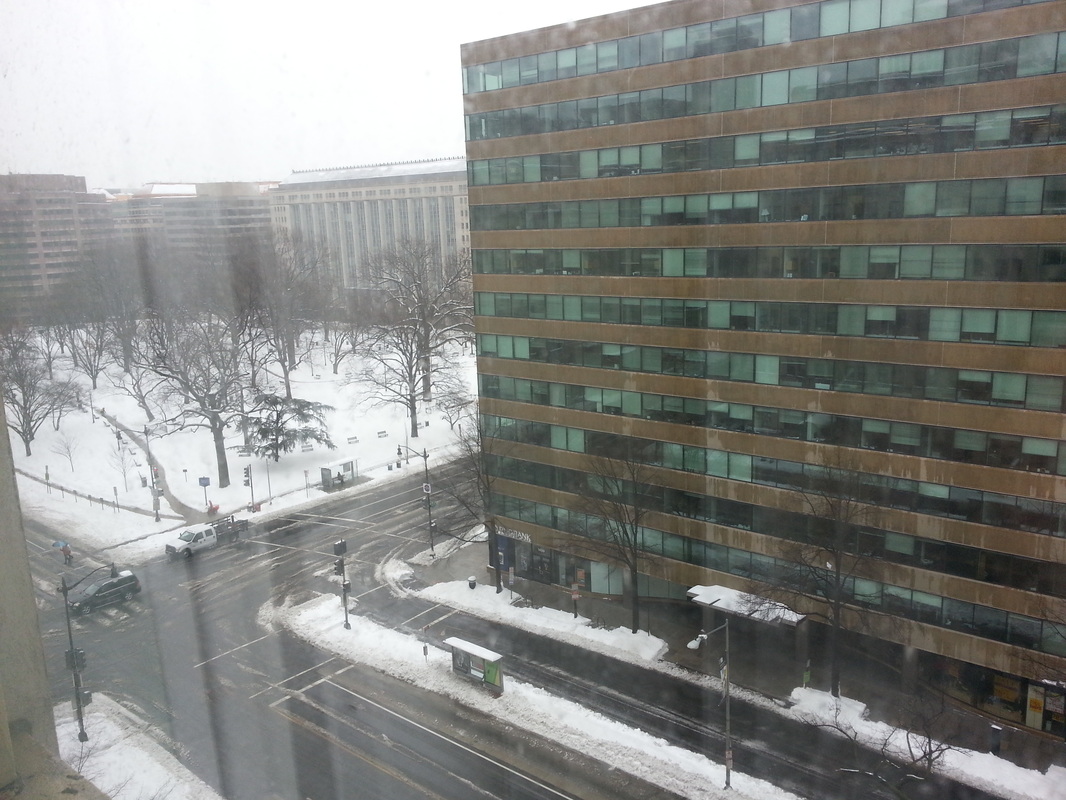On Friday, February 28th, I (we) finished the CELTA course in Washington D.C. Here we were, with the students:
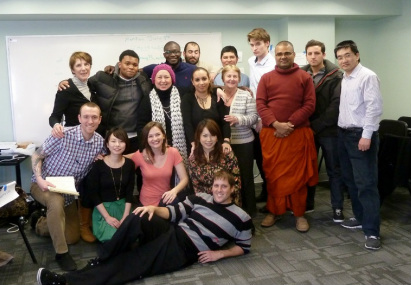
On the last day with the Lower-Intermediate class (see
below for more).
There is a lot I can say about CELTA, but to keep a manageable length I’ll limit this to only a description of our last day:
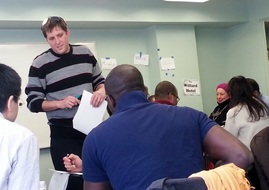 J.F. teaching in our last CELTA
J.F. teaching in our last CELTA
“teaching practice” session
Our last day was (for once) very relaxed for all of us “trainees”, except for J.F., pictured at left in the striped sweater. If he looks like a football player, that’s just because he was one, fifteen years ago in college.
Also pictured there are several “practice students” (from left): H.B.Y., a friendly Chinese man in his 30s; A.L., a Camerooni living in Madagascar on a longterm visit to the USA; B.K., a Buddhist monk-missionary from Sri Lanka; and in the corner is S.M. from Lebanon; we also see the back of A.S. from Japan’s head. (As you can tell, this lower-intermediate class was legitimately international. East-Asians were the biggest “bloc”, but only formed 25%-30% of the class, usually). Also pictured is the “Willard Hotel” sign I made to help with A.W.F.’s excellent final lesson (finding directions and sightseeing around Washington).
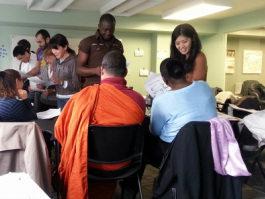 Students role-playing waiters and customers
Students role-playing waiters and customers
From one of M.H.’s most successful lessons
Anyway. Yes, J.F. had to teach on our last day. His teaching style changed a lot during the course. I remember a lot of comical shouting, arm waving, excitement, and a “game” atmosphere, often even during grammar explanations. (He describes his own personality as “the crazy uncle”, whatever that means.) That was then. By the later teaching-practice sessions, especially his last, J.F. had reduced this stuff to very near zero.
If you ask me, J.F. got too subdued. I’d guess that he was sternly told by our first-half trainer to calm things down. He got the message and gradually cut out the energy that animated him in the early lessons. The lessons became better in a way (more focused) but at the cost of the fun. In the world of the Internet, if a real-life teacher cannot provide a dynamic classroom environment, why even have the teacher? Students can watch online videos for passive, detached learning.
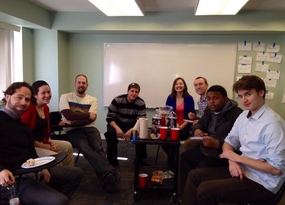 From l.: Trainers: R.P., C.K. / A., front desk guy.
From l.: Trainers: R.P., C.K. / A., front desk guy.
CELTA trainees: J.F., A.W.F., M.H., K.T., Me.
Not pictured: S.R. (see #195).
Hmm, I think I ought to remind myself that I am trying to describe our last CELTA day, and not analyze J.F.’s teaching or wade into the deep, fast-moving, shark-filled waters of education theory.
The teaching was, as always, in the afternoon. I didn’t yet mention the morning. Back to that: Our last morning was marked by a lot of paper work, chitchat, writing of addresses, more chitchat, signing of documents, questions-and-answers about jobs, and then pizza.
At our suggestion, the two trainers, C.K. and R.P., agreed to eat lunch (pizza) with us. Snacks appeared (most from me, including Thai “chicken-flavored peanuts”, much-chuckled-about, that I got either in Malaysia or Thailand in November. The nuts smelled like popcorn but tasted okay). The drinks were flat Coke Zero and Pepsi Max, left over from the “taste test” I’d done in my last teaching session two days earlier. You can see the bottles there, on the cart that normally holds a projector. It was fun.
At one point before this, we had to make posters giving advice to future CELTA trainees. Here are ours:
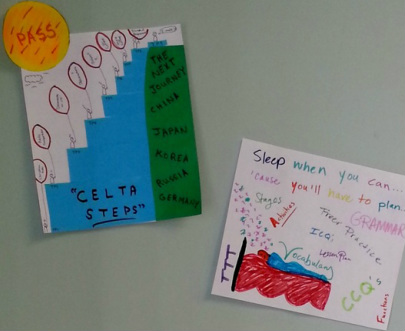 Advice to future CELTA trainees, in poster form
Advice to future CELTA trainees, in poster form
The one at left was, conceptually, a collaboration between J.F. and myself.
There are a series of steps (one for each “teaching practice”). A little character stands on each, looking up towards the next step. He holds a different balloon each time, with what we thought was helpful at that stage — i.e., something that would “lift” the guy to the next step, The first step is biggest, and that balloon says “C.K.”, our first trainer and current head of the Washington D.C. center (with whom I didn’t exactly see eye to eye on certain things). Another has the name of a useful grammar book, “Grammar in Use”. “R.P.” appears near the middle (he was our second-half trainer and very friendly/helpful/supportive). The little man has a few “zzz’s” in the middle steps. Accordingly, two of the balloons near the top say “coffee” and “more coffee”. The last ballon says “Triumph of Perseverance”. At the top, the little man says “I made it!”
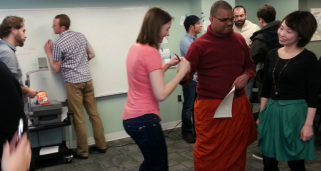 After the last class
After the last class
We’d all made it. (Students sometimes fail and have to retake it.)
All that was left was to watch J.F.’s lesson. In the last slot, which would’ve been S.R.’s, we played a game all together, both students and teachers, competing for candy. He’d been the only teacher that day, so J.F. led the game with a return of that early energy (after the trainer had left!). The game was great, especially after the candy appeared.
Not long afterwards came the obligatory group picture:
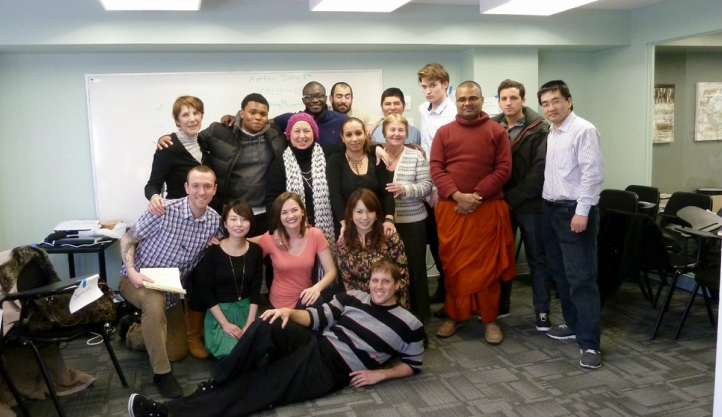
Our “Last Day, End of Class” picture, featuring us newly-completed CELTA-certificate-holders intermingled with most of our “Lower-Intermediate” class.
Back row, from left: L.T. from Ukraine, K.T. [a CELTA candidate] from Cameroon, A.L. from Cameroon, J.M. “Appletree” from Spain, J.C. from El Salvador, Me [CELTA candidate], Z.T. from Morocco, H.B.Y. from China.
Middle row: S.M. from Lebanon, M.E.M. from Morocco, V.P. from Bulgaria, B.K. from Sri Lanka.
Kneeling: M.H. [CELTA candidate] from Maryland, H.M. from Japan, A.W.F. [CELTA candidate] from Ohio, A.K. from Japan.
Laying down: J.F. [CELTA candidate] from…parts unknown.
Not pictured, students: M.S. from Japan (whom we also taught in the upper-intermediate class but she requested to be bumped down), F.V. from Senegal (a legally-deaf student, it seemed), A.S. from Japan (who at the moment of this picture was, I recall, for some reason sitting at the front desk — just feet off to the right behind the glass — discussing something).
Not pictured, teachers: S.R. from Ohio.
Not long after this, we left the building for the last time, riding down in its unusual rectangular-shaped elevator. For the first time, we’d all left together, off to celebrate…!
